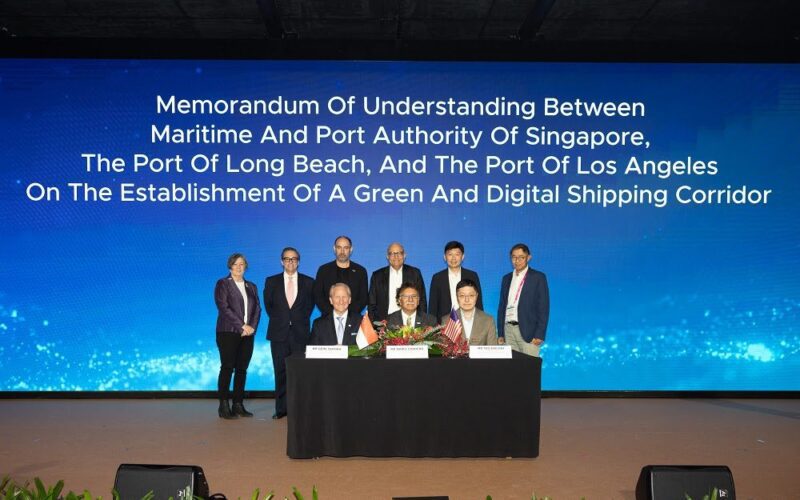
Greening the shipping corridor between Los Angeles, Long Beach and Singapore could mean more jobs, better health outcomes for communities and economic benefits for participating nations, according to a study released April 18.
Commissioned by C40 Cities, the Maritime and Port Authority of Singapore and the L.A. and Long Beach seaports, the study was conducted by the American Bureau of Shipping to review the trade flow among the three seaports, and create a baseline for the activity and the energy demand needed to ships to operate along the trade route through 2050.
The study found that ships traveling along the corridor represent 7% of the global container trade (about 14.5% of Port of Long Beach’s traffic and 20% of the Port of L.A.’s traffic) and the annual vessel energy demand on the route is projected to be about 60,000 terajoules, or about two months’ worth of what Singapore generates in electricity.
According to the study, it would take about 850,000 tons of methanol and 160,000 tons of ammonia annually by 2030 to meet shipping demands along the corridor, which could potentially equate to the annual displacement of greenhouse gas emissions from nearly 320,000 cars.
Moving to zero- and near-zero emission fuels could also mean about 700 green jobs.
The study comes one year after the three seaports signed a memorandum of understanding to establish a so-called Green and Digital Shipping Corridor.
“One of the most important parts of this partnership is it allows us to better understand and target a source of emissions that is hard for us to control as a local seaport authority – shipborne emissions,” Port of Long Beach CEO Mario Cordero said. “This work, vital to our net zero-emission quest, will result in economic and health benefits all along the trans-Pacific trade corridor.”
Port of Los Angeles Executive Director Gene Seroka said the study provides a sense of scale and scope to inform their implementation of the corridor.
“Achieving the reductions of greenhouse gas emissions required will take coordination and commitment from public and private stakeholders across the maritime and goods movement industries,” Seroka said. “We’re proud to be collaborating with industry partners to make this corridor a reality.”

